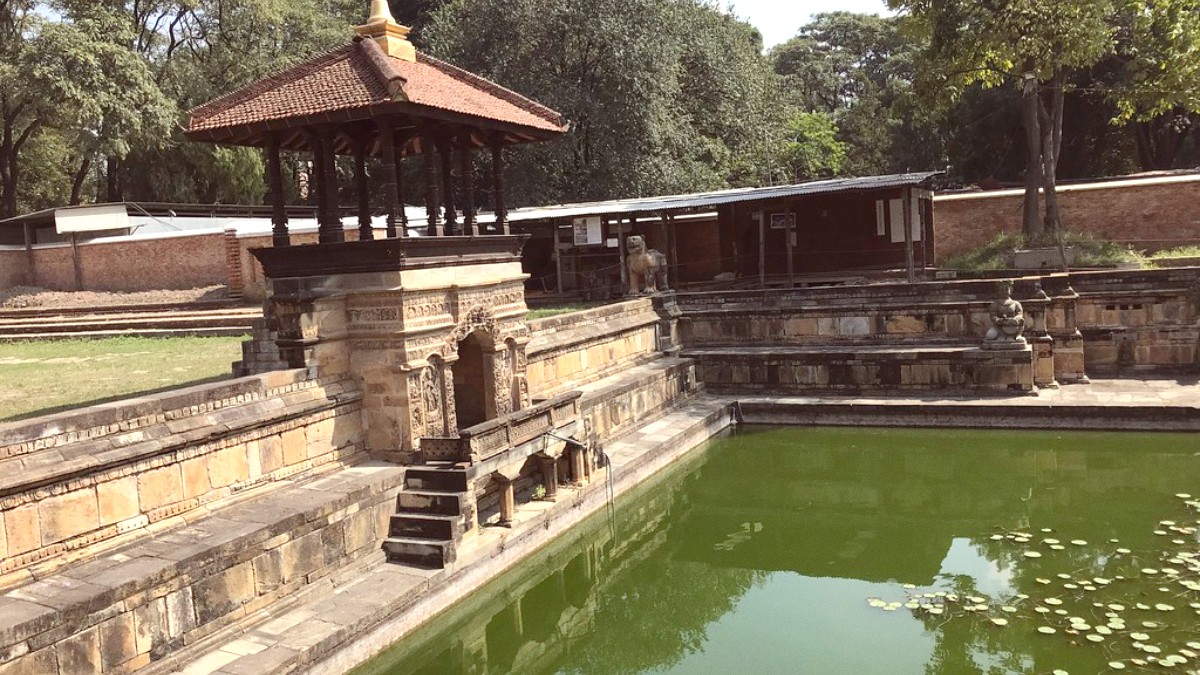
Around The Kathmandu Valley, Nepal
Patan's charm in its ability to blend the past with the present. Walk through its narrow, brick-paved lanes, and you will find living traditions, daily rituals, and a sense of timelessness. The city buzzes with activity, from local markets selling fresh produce to workshops where metalworkers and woodcarvers continue their ancestral trades. Visitors find Patan a peaceful yet lively contrast to the busier pace of Kathmandu. It a destination that promises both reflection and discovery, insights into a culture shaped by devotion and artistic expression.
Patan, officially known as Lalitpur Metropolitan City, occupies a distinct location within the Kathmandu Valley. It sits on the southern bank of the Bagmati River, directly south of Kathmandu city. The Bagmati River a natural boundary separating the two urban centers. At an average elevation of approximately 1,350 meters (4,429 feet) above sea level, Patan enjoys a relatively mild climate throughout much of the year, characteristic of the valley floor.
This geographical placement Patan easily accessible from Kathmandu, often just a short drive or a pleasant walk from certain parts of the capital. Being one of the three ancient royal cities, alongside Kathmandu and Bhaktapur, its location a 'golden triangle' for heritage exploration within the valley. The relatively flat terrain of the city center Patan's core highly walkable, inviting visitors to explore its dense network of alleys and courtyards on foot. The surrounding hills, visible from many parts of the city on clear days, a picturesque backdrop and opportunities for day trips to higher viewpoints. The river, while serving as a boundary, also holds religious significance for local communities, adding another layer to the city's cultural landscape. The city’s position within the valley basin also means it experiences similar weather patterns to Kathmandu, with distinct seasons that travel planning.
Patan one of the oldest settlements in the Kathmandu Valley, with its origins tracing back to the 3rd century BCE. The Kirat dynasty is credited with its initial establishment. Over centuries, the city expanded and flourished under successive powerful dynasties. The Licchavi dynasty, prominent from the 6th to 8th centuries CE, contributed significantly to Patan's early architectural and artistic development. Evidence of their influence seen in various stone sculptures and inscriptions found across the city.
The Malla dynasty, ruling from the 14th to 18th centuries CE, marked Patan's golden age. Under their patronage, the city transformed into an unparalleled hub for arts and crafts. Malla kings commissioned the construction of numerous temples, palaces, and public buildings, each adorned with intricate wood carvings, metalwork, and stone sculptures. This period saw the rise of Patan's reputation as the "City of Fine Arts" (Lalitpur, meaning "City of Beauty"), a title it proudly carries today. Artisans developed unique Newari techniques, passing down skills through generations. The city’s Durbar Square, an UNESCO World Heritage Site, a prime example of Malla-era artistry, showing a remarkable concentration of these architectural wonders.
Initial settlement and early foundations.
Early architectural and artistic contributions.
Golden Age of art and architecture, city named Lalitpur.
Annexed by Prithvi Narayan Shah, retains artistic heritage.
Continues as a center for traditional crafts.
Patan remained an independent kingdom, fiercely guarding its unique cultural identity, until 1768. In that year, Prithvi Narayan Shah, the Gorkha king, annexed Patan into his unified Kingdom of Nepal. Despite this political change, Patan retained its artistic legacy. Its workshops continued to produce bronze statues, thangka paintings, and elaborate woodcarvings, maintaining a tradition that thrives even now. The city's history not just about rulers and wars; it a story of enduring artistry, spiritual devotion, and a community deeply connected to its heritage. Every temple, every courtyard, and every statue in Patan tells a part of this long and rich narrative, visitors a tangible link to a glorious past.
Patan receives recognition for its traditional Newari architecture, which features ornate wooden windows, struts, and multi-tiered roofs. The city’s exquisite metal crafts, including bronze statues and religious artifacts, enjoy global fame. Skilled artisans create detailed wood carvings and impressive stone sculptures. These aspects combine to make Patan a center of art and culture in Nepal.
Patan Durbar Square, an UNESCO World Heritage Site, the city's historic core, featuring ancient palaces, temples, and courtyards. The Krishna Mandir, with its intricate stone carvings, a highlight within the square. The Golden Temple (Hiranya Varna Mahavihar), a Buddhist monastery, captivating visitors with its gilded facade. The Patan Museum, housed in the former royal palace, showcases impressive Newari art. The Kumbeshwar Temple, an unique five-storied pagoda, also draws visitors.
Patan is also known as Lalitpur, which translates to 'City of Beauty' or 'City of Fine Arts,' reflecting its rich heritage of craftsmanship and aesthetics.
Patan a rich experience. Here a quick overview of what to expect:
Patan, officially known as Lalitpur Metropolitan City. Its historic identity as "City of Fine Arts" reflects its artistic legacy.
Find Patan in the Kathmandu Valley, within Bagmati Province, Nepal. It sits south of Kathmandu, separated by the Bagmati River.
The metropolitan area houses approximately 299,000 residents (2021 estimate).
Nepali serves as the official language. English commonly understood and spoken in tourist areas, hotels, and restaurants, making communication relatively easy for international visitors.